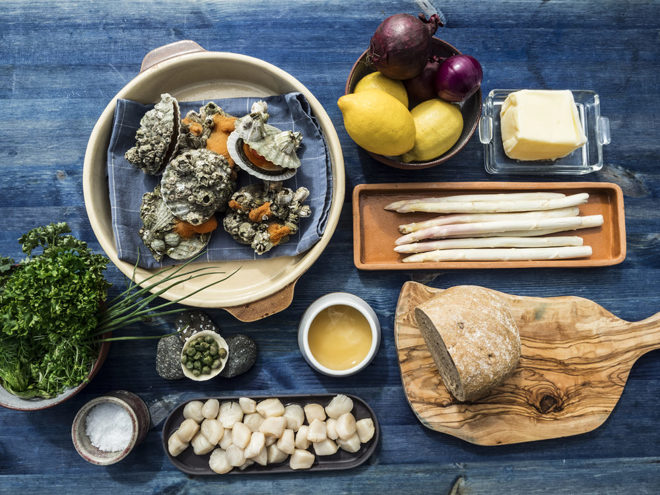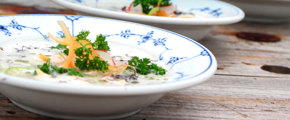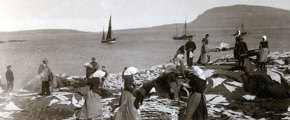Queen scallops
This fan-shaped mollusc is small in size, but large in taste. Its tender and moist meat is versatile and works wonderfully with a variety of flavours. The Queen scallop is also quite the active swimmer.
The queen scallop has a meaty centre with a salty and slightly sweet flavour. Each individual shell contains a delicious little lump of firm and moist meat. The queen scallop has a taste that stands very well on its own and it does not require a lot of preparation.

Queen scallops are easy to steam, fry or grill. They can also be smoked with great results. While queen scallops work very well with many different flavours, simple dishes are often the best way to go.
Scallops are a lean food rich in protein, vitamin D, vitamin B12 and selenium.

Try out this recipe for queen scallops, with asparagus and vinaigrette from Faroese chef, Gutti Winther.
Biology
Queen scallops (Chlamys Opercularis) are a bivalve mollusc from the Pectinidae family and can be found all across the Northeast Atlantic.
In the Faroe Islands the queen scallop is called Jákupsskel – St. Jacobs scallops.
The queen scallop can grow up to 9 cm in diameter and is medium sized compared to other species of scallops. Queen scallops have a fan-like shell with horizontal bands of colour. Depending on their environment, diet and age, their colour can vary from a dark brown or deep orangey-red to a faded pastel pink.
The queen scallop is left convex which means its left side is usually more rounded and has stronger colours.
The queen scallop prefers a sandy seabed, with small rocks and gravel. They will mostly keep to shallow waters about 40 metres deep but have also been found at depths of up to 400 metres. The queen scallop uses an internal filtering system to feed on plankton and other microscopic organisms.
Queen scallops are hermaphrodites and have both the male and female organs within their shell. These mature after about a year. The orange ovaries and the white testis ripen during the winter months and spawn during the summer. The larvae float freely in the water for over a month before settling on the bottom.
All over the inner lining if the queen scallop’s shell there are numerous tiny little eyes. These are a defence mechanism to alert them to possible predators, such as starfish or crabs. Upon sensing danger, the queen scallop with immediately close its shell.
Young queen scallops are often firmly attached to rocks and will remain stationary. Older queen scallops, however, are decent swimmers. By repeatedly clasping and releasing their valves they are able to propel themselves around rather quickly. This function is useful, as it allows the queen scallop to escape danger and change environment when needed.
The Faroe Islands fish for queen scallops in Faroese waters using trawls.





